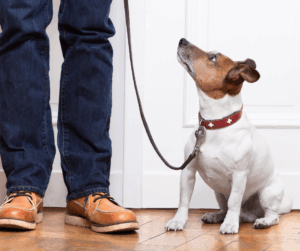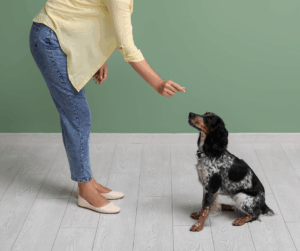Michael Baugh CDBC
I have been in the dog training business since 1999. My first client lived in a high-rise on Lake Erie in Cleveland. Her Bichon would steal bits of paper, socks, and underwear, then race around the apartment with his prize. I’l learned enough to help, not bad for a beginner. But I had no clue about the powerful lessons that were still to come.

For years, I read nothing but books about dog behavior. I lost count of the courses, workshops, and seminars, both online and in person. I pursued graduate studies, going deeper and deeper. Learning thrills me.
There were mistakes. Painful losses. Tears. Early on, a large dog sent me to the ER. I sometimes rub my fingers over the scars without thinking. My body remembers.
From all of that — the study, the money spent, the hours invested, and the decades of experience — one lesson stands above the rest. Dog training is about dogs, yes. Teaching dog training is about people.
Prizing the Client
I love the awkward truth of that phrase. Psychologist Carl Rogers coined it as part of his work on unconditional positive regard. As teachers of dog behavior and behavior change, we must care for our human clients as much as their dogs. Rogers suggests that to teach well and to be of real help, we must love our clients.
We do not have to agree with them. But we have to find meaningful common ground. A genuine human connection is not optional. It is the foundation.
Paying Attention Comes First
Dog training should not be a list of problems to solve. We show up with knowledge and experience. We often arrive with solutions ready. But we are not there to teach our agenda.
Listen deeply. Pay attention. Let us discover what our client truly needs and how it fits into their real life with their dog.
Caring for the Relationship That Matters
Teaching dog training is about relationships. It begins with the relationship between trainer and human learner. We prize the client.
More importantly, it is about our client’s relationship with their dog. This is why we teach with intelligence and compassion. It’s why we teach positive reinforcement methods. They protect and grow the relationship between people and their dogs.
Positive reinforcement works. It is love in action.
Love your fellow human, your prized client. Pay attention to them and to what they need. Care for their relationship with their dog.
From the kind woman with her small, fluffy white dog to now, this work continues to nurture me. I can think of no more meaningful way to spend my mental, emotional, and creative energy. I turn sixty this year, nearly half of it spent helping people live better lives with their dogs. When I think about that, I smile.
What a gift. What a joy it is to begin again each day.
Michael teaches dog training in Houston, TX. He specializes in helping people with aggressive dog training.


